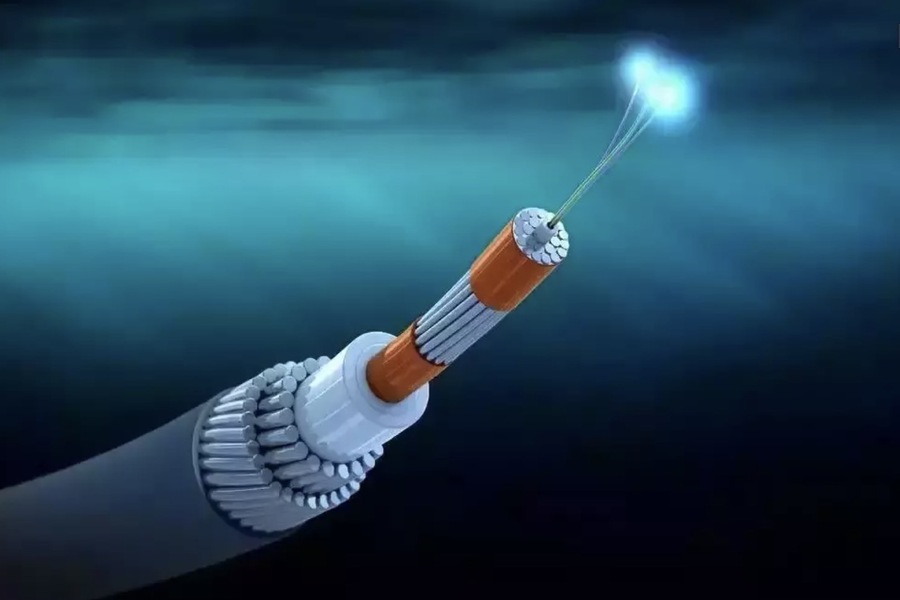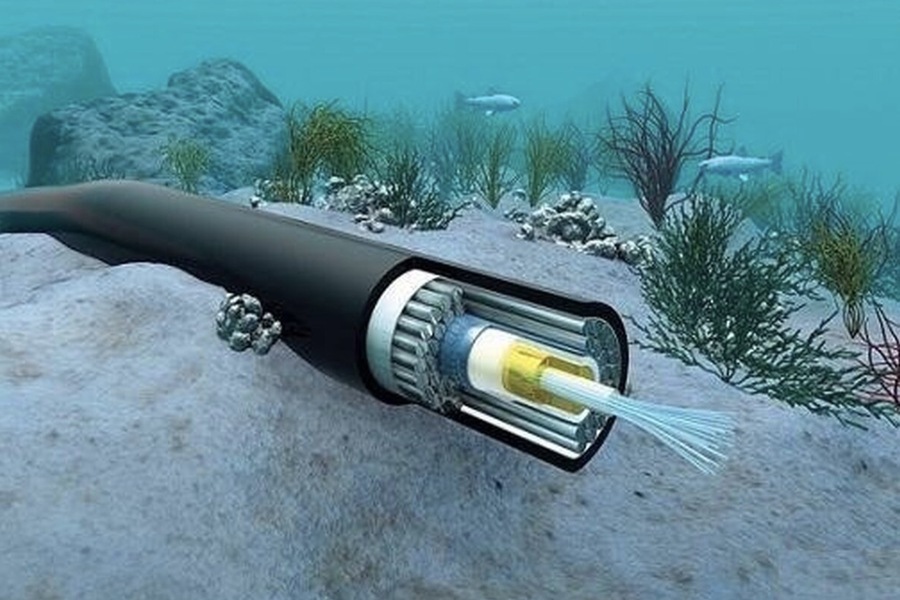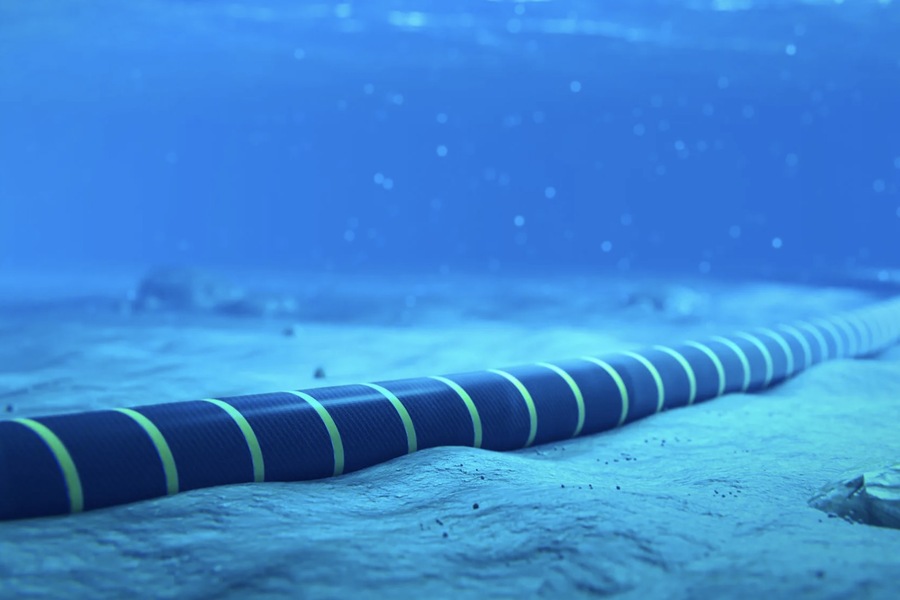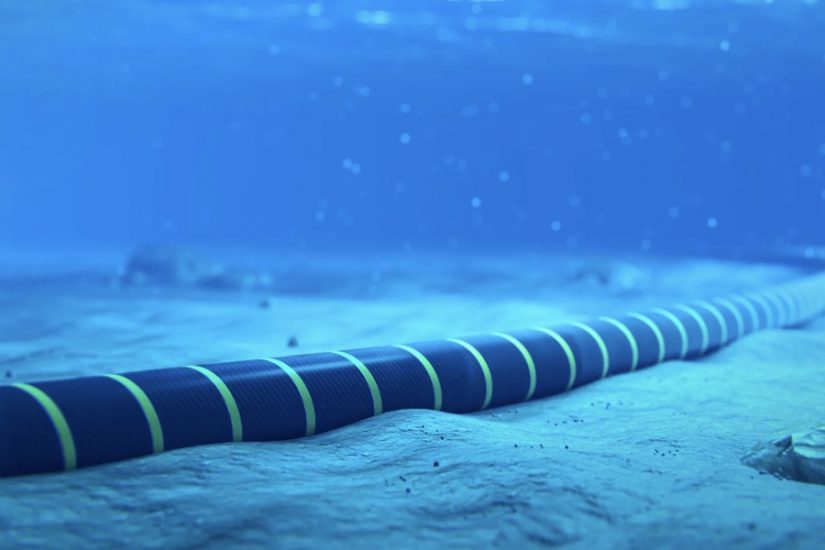Record-Breaking Cables: Milestones in Power Transmission and the Future of Submarine Cables
The cable industry is a vital barometer of economic strength and industrial advancement. Today, almost every sector relies on electricity, making cable systems indispensable across industries. Power cables are essential not only for maintaining stable electricity flow but also for connecting large and small regions alike in the global grid. Companies like BonnGulf play a key role in providing high-quality cable management solutions that support these systems, ensuring safety, reliability, and ease of operation. Unlike traditional overhead power lines, cable systems are more compact, occupy less space, and offer better durability and efficiency.
With power grids in factories, cities, and large towns increasingly dependent on cables, record-breaking power cables have emerged, pushing the boundaries of technology and engineering. Let’s take a closer look at some of these remarkable cables and the innovations behind them.
Page Content
Milestones in Record-Breaking Cables
1. Basslink: Tasmania to Australia
For many years, the longest submarine power cable was the Basslink cable, which connects Tasmania and mainland Australia, spanning 290 kilometers across the Bass Strait. This cable, designed for high-voltage direct current (HVDC), can transmit up to 600 MW of electricity. It serves as a critical link, allowing electricity flow between Tasmania’s renewable energy resources and the demand centers in Victoria, Australia.
Basslink is designed to withstand harsh marine conditions, with a 15 cm-thick twin-core structure that ensures durability and efficient power flow. Using HVDC technology, the cable reduces losses associated with long-distance transmission, ensuring that power reaches its destination reliably. Basslink exemplifies how underwater cables enable energy sharing across regions, enhancing stability in both the supply and demand of electricity.
2. Baltic Cable: Germany to Sweden
The Baltic Cable, launched in 1994, was Europe’s first major underwater HVDC transmission project and played a pivotal role in interconnecting European power grids. This 250 km cable links Lübeck-Herrenwieck in northern Germany to the Swedish power grid in Trelleborg. With a capacity of 600 MW, the Baltic Cable provides a reliable link that balances power needs between Germany and Sweden.
In addition to the 233 km seabed section, the Baltic Cable also includes several kilometers of underground cable and crosses the River Trave via a canal that runs six meters below the riverbed. This engineering marvel paved the way for more advanced interconnections in Europe, laying the foundation for what we know today as a fully integrated European energy network.
3. NorNed: The Netherlands to Norway
As of 2012, the NorNed cable held the title of the world’s longest electricity transmission cable, stretching 580 kilometers and linking Eemshaven in the Netherlands with Fedå in Norway. Operating at 450 kV DC, this HVDC cable has a capacity of up to 700 MW, allowing electricity to flow efficiently between the Netherlands and Norway.
NorNed is instrumental in balancing supply and demand between the two countries, especially given Norway’s abundance of hydropower. The ability to exchange electricity between nations contributes to grid stability, especially during peak demand periods or energy shortages. The NorNed project set a benchmark in HVDC technology and marine engineering, pushing the limits of cable design and functionality.
4. North Sea Link: England to Norway
In October 2021, the North Sea Link became the longest underwater HVDC cable, spanning 720 kilometers between Blyth, England, and Kvildal, Norway. Initially operating at 700 MW (with plans to increase to 1,400 MW), this cable represents a significant achievement in long-distance, high-capacity power transmission.
The project, a collaboration between Statnett and National Grid, was an ambitious venture that required advanced HVDC converter technology provided by ABB. The submarine cable, manufactured by Prysmian at the Arco Felice plant in Naples, Italy, is designed to handle the challenges of the deep-sea environment while maintaining a steady and powerful electricity flow. North Sea Link highlights the potential of transcontinental cables to connect energy resources across national borders, optimizing power usage in both countries.
5. The Tyrrhenian Link: Sardinia to Italy
In terms of depth, the Tyrrhenian Link holds a world record as the deepest submarine power cable, reaching 1,600 meters below sea level in the Tyrrhenian Sea. This cable connects the island of Sardinia with the Italian mainland, showcasing an intricate design that ensures durability under extreme underwater pressures.
The Tyrrhenian Link spans 420 kilometers along the seabed, with an additional 15 kilometers on land. To secure the cable on rocky seabeds, engineers have used manually clamped fixtures, while sections that cross sedimentary zones are buried a meter below to prevent any environmental damage or disturbance. This cable is a testament to Italy’s commitment to enhancing grid resilience and reliability across the Mediterranean region.

The Future of Submarine Cables: Australia-Asia Power Link (AAPowerLink)
The Australia-Asia Power Link (AAPowerLink) is a visionary project that aims to connect Australia’s abundant solar resources to Asia’s energy demand. Expected to break all records, this 4,500 km cable will transmit electricity generated by one of the world’s largest solar power plants in northern Australia. With a projected capacity of 3 GW, AAPowerLink will far surpass current record-breaking cables, providing renewable energy to Singapore and eventually Indonesia.
Scheduled for launch in mid-2023 and operational by 2026, AAPowerLink combines the world’s largest solar plant with extensive battery storage. This enables a stable, 24/7 renewable energy supply across continents. The project signifies a major leap toward global energy connectivity and sustainability, facilitating renewable energy trade between regions that were previously out of reach. Once complete, AAPowerLink will be five times longer than any existing submarine power cable, setting a new benchmark in global energy infrastructure.
Cable Management Systems: Ensuring Longevity and Efficiency
The complexity of modern cable projects requires robust and reliable cable management solutions. As cables grow longer and transmission capacities increase, effective cable management becomes essential to ensure durability, safety, and ease of maintenance. Proper cable management is critical for large-scale projects, which often need to withstand environmental challenges, including underwater conditions, high-voltage operations, and extreme temperatures.
In the UAE, BonnGulf is a leading provider of premium cable trays, supporting various industrial and commercial needs. BonnGulf’s cable trays are designed to offer reliable support for complex cable systems, guaranteeing durability and maintenance efficiency. Whether for wire mesh trays in industrial applications or specialized solutions for commercial installations, BonnGulf’s products help maximize cable longevity and performance. Properly managed cables reduce downtime, improve safety, and facilitate seamless repairs or expansions in the future.

The Impact of Record-Breaking Cables on the Global Energy Landscape
Record-breaking power cables not only demonstrate the feats of modern engineering but also play a vital role in addressing global energy challenges. These cables allow nations to share resources, balance supply and demand, and reduce reliance on fossil fuels by tapping into renewable sources across borders. As countries strive to meet ambitious climate goals, these transnational cable projects are becoming instrumental in achieving sustainable, interconnected energy systems.
Submarine cables are increasingly being adopted to address the demand for renewable energy. By connecting energy-rich regions (often located far from demand centers) to urban areas, cables help reduce transmission losses, making renewable energy sources like wind, solar, and hydro more viable for mass consumption. This shift also has economic benefits, as stable power supplies attract industries and stimulate economic growth.
Conclusion
Record-breaking cables represent groundbreaking advancements in technology and engineering, enabling long-distance and high-capacity electricity transmission. Projects like the Australia-Asia Power Link are paving the way for a new era of global energy connectivity, linking renewable resources across continents to create a cleaner, more sustainable world. With effective cable management solutions from trusted providers like BonnGulf, complex cable networks can operate safely and efficiently for years to come.
The future of power transmission is bright, driven by ambitious projects and technological innovations that are shaping a more interconnected, sustainable energy landscape. These milestones highlight the importance of continuous advancement in cable technology, making it possible to tackle new challenges and meet the growing demands of a rapidly evolving global economy.
Surfer, traveler, DJ, Bauhaus fan and doodler. Operating at the junction of beauty and mathematics to create not just a logo, but a feeling. Nothing ventured, nothing gained.

